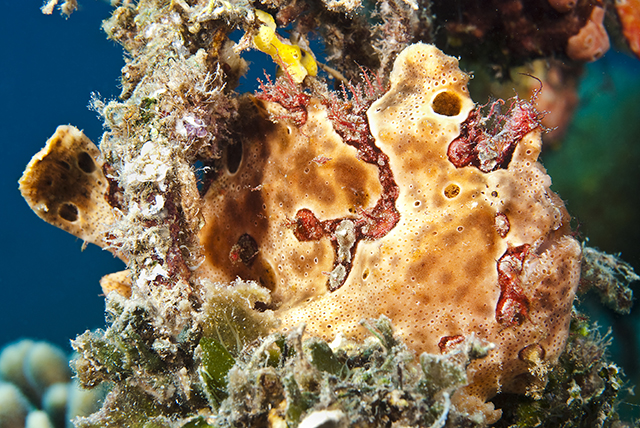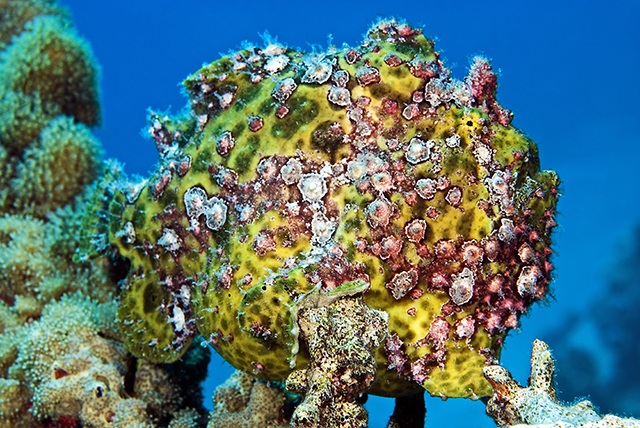News
Resistance Is Futile: Taba’s ‘Alien’ Invasion
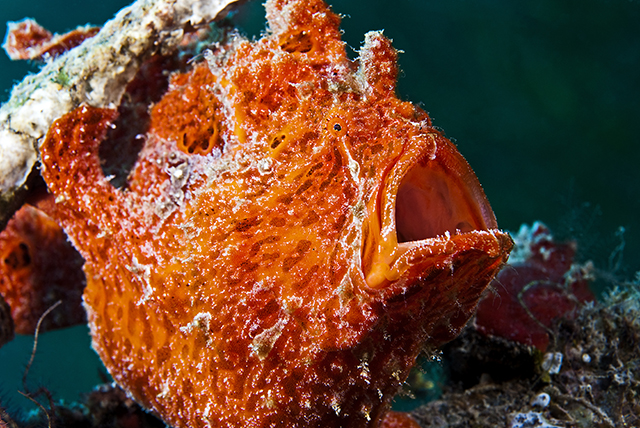
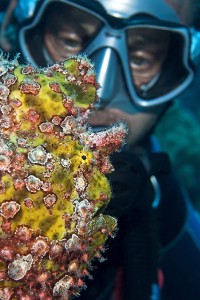
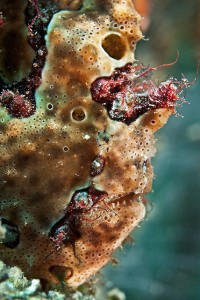 While Taba’s unsuspecting tourists sizzle away in the sunshine, an insatiable predator prepares to strike. This undersea creature lies perfectly camouflaged, armed and extremely deadly. Fish lured into the ambush zone have no escape. Flexible jaws devour in a single, swift gulp. But this strange looking ‘alien’ poses no threat to divers. In fact, there’s no denying it, divers love Frogfish (Antennariidae), and Taba, in northern Egypt, is fast becoming the Red Sea’s top spot for encounters.
While Taba’s unsuspecting tourists sizzle away in the sunshine, an insatiable predator prepares to strike. This undersea creature lies perfectly camouflaged, armed and extremely deadly. Fish lured into the ambush zone have no escape. Flexible jaws devour in a single, swift gulp. But this strange looking ‘alien’ poses no threat to divers. In fact, there’s no denying it, divers love Frogfish (Antennariidae), and Taba, in northern Egypt, is fast becoming the Red Sea’s top spot for encounters.
But what has initiated this increase in ‘alien’ activity, or is it all just a hoax? This definitely had the makings of an X-files mystery? The truth was out there somewhere, so I packed my bags bound for Taba Heights in Egypt. Dan, from Dive Holiday Designers, briefed me en- route: flight ETA – 4 hours; hotel transfer – 45 minutes; accommodation – Intercontinental Hotel;special equipment – Nikon DSLR.
Conditions at Taba are perfect for Froggie spotting. Underwater visibility averages 20 metres throughout the year, currents are virtually non-existent and the majority of dive sites are between 5 – 20 metres. Taba Heights also operates a one boat per site policy so divers aren’t crowding en mass, making the whole experience far more relaxed and enjoyable. A high standard of accommodation and a professionally run dive centre rounded off the facilities perfectly.
There are even some nice shore diving sites where Froggie sightings are virtually guaranteed. At ‘Canyons’ I found 5 different Froggies on a single dive. Huw, the diving manager at Aqua Sport, even told stories of a monster green Froggie that planted itself on his chest during a PADI Advanced Course. This overly friendly Froggie had even been known to sit on a divers head. Huw said ‘It just seems to like divers’.
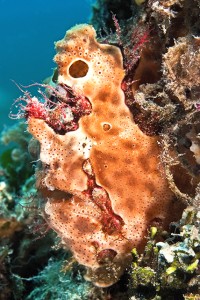
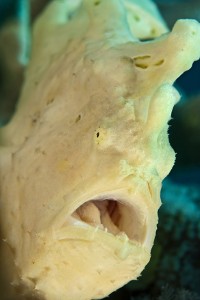 Froggies are extremely ugly looking fish but I’m sure this is all part of their game plan. The masters of stealth can mimic their surroundings by changing colour and texture in a matter of minutes growing lumps and bumps similar to the surface of corals or sponges. Passing fish often don’t see the danger until it’s too late. Divers also have a tough time spotting them, but then, that’s all part of the fun. Red Sea Waterworld’s General Manager had even reported sightings on their house reef. A dark brown Froggie had made its home on an upturned parasol that blew into the sea. My findings were becoming more bizarre each day!
Froggies are extremely ugly looking fish but I’m sure this is all part of their game plan. The masters of stealth can mimic their surroundings by changing colour and texture in a matter of minutes growing lumps and bumps similar to the surface of corals or sponges. Passing fish often don’t see the danger until it’s too late. Divers also have a tough time spotting them, but then, that’s all part of the fun. Red Sea Waterworld’s General Manager had even reported sightings on their house reef. A dark brown Froggie had made its home on an upturned parasol that blew into the sea. My findings were becoming more bizarre each day!
Taba’s coastal waters are home to a number of different species of Froggies. But it’s difficult to tell them apart as there are so many variations in colours, shapes and sizes, even in the same family genus. Worldwide, there are around 46 different species. Sizes vary from a few centimetres up to a giant 40 centimetres. At the Radisson Reef (Shaab Gamila) I found a black 25cm Froggie sitting under a table coral and Katie, my dive buddy, spotted another small dark green 5cm Froggie just a few metres away. Andrew said there were two more Froggies sitting on an old fish trap in the sea grass at 10 metres. We had failed to spot them during our afternoon sortie. Male Froggies tend to be smaller than females and there is no differentiation in colours or patterns.
Glassfish Shoals and pinnacles swathed in Anthias (the little orange fish – pseudanthias squamipinnis) are prime Froggie food. But the voracious feeder isn’t fussy; it will even eat its own kind! Froggies don’t have any teeth. Their prey is sucked in and swallowed whole.
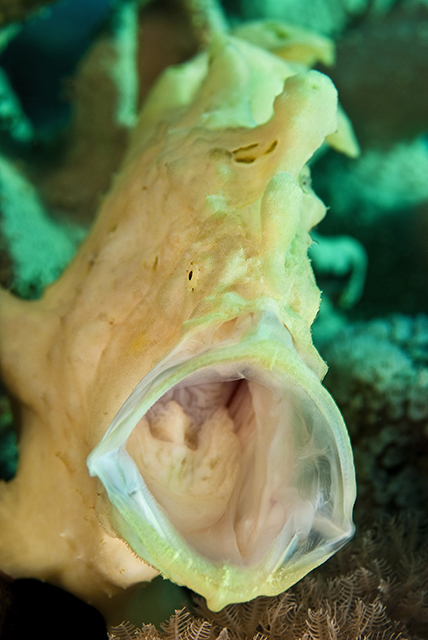 The Glassfish pinnacle at Farun Island is always full of sizeable Froggies. I found three big 20-30cm Froggies camouflaged amongst the coral heads. They are perfect subjects for photographers although it’s not always easy to get a ‘good’ picture. Nine times out of ten they are in a head down position facing towards the reef making it awkward for divers to get a good shot without breaking the fragile corals. Because they are so well camouflaged it’s also difficult to get a picture that looks anything but a lump of coral. The patterned Froggies are the worst. Even with the eye perfectly in focus it is difficult to tell that it’s a fish. I personally think mouth-open shots are the best. As an added bonus Tamer guided us back to the shallows and spotted a bright red 10cm Froggie in just 5 metres. My Froggie count was now nearing double figures in just 4 dives!
The Glassfish pinnacle at Farun Island is always full of sizeable Froggies. I found three big 20-30cm Froggies camouflaged amongst the coral heads. They are perfect subjects for photographers although it’s not always easy to get a ‘good’ picture. Nine times out of ten they are in a head down position facing towards the reef making it awkward for divers to get a good shot without breaking the fragile corals. Because they are so well camouflaged it’s also difficult to get a picture that looks anything but a lump of coral. The patterned Froggies are the worst. Even with the eye perfectly in focus it is difficult to tell that it’s a fish. I personally think mouth-open shots are the best. As an added bonus Tamer guided us back to the shallows and spotted a bright red 10cm Froggie in just 5 metres. My Froggie count was now nearing double figures in just 4 dives!
Froggies have a modified dorsal spine called a lure to attract prey. They use the lure or illiceum just like a fishing rod dangling bait on the end of a line. The shape of the esca or bait can resemble a worm, fish or crab; it will mimic whatever their prey normally eats. Taba’s Froggies all seem to have lures shaped like small fish. They jiggle it about enticing the little Glassfish or Anthias to come closer. This is why Frogfish are also known as Anglerfish.
Froggies aren’t exactly lively creatures. They don’t seem to move very far at all, normally staying in the same place or within a few metres for months on end. This makes the Dive Guides’ jobs nice and easy. They can impress punters with their fish-finding prowess by leading them straight to the Froggie time and time again. At ‘Maxwell’s’ there’s a 20cm purple Froggie that hasn’t moved for more than 2 months. It seems more than happy swaying about on a tube sponge picking off the odd passing fish.
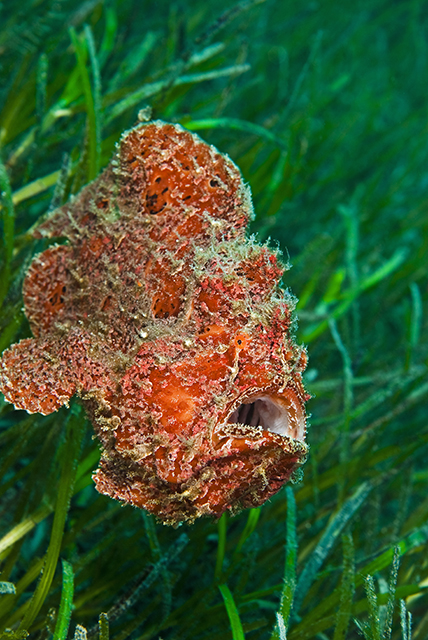 It’s very rare to see Froggies on the move unless they get agitated by divers or over-zealous photographers poking cameras and flashguns too close. They don’t have swim bladders so can’t swim like conventional fish. It’s more like a ‘walk’ using their modified pectoral fins as legs. For more rapid movement they use a form of jet propulsion, gulping in water and forcing it out from a small opening behind the gills. This produces forward thrust along the seabed.
It’s very rare to see Froggies on the move unless they get agitated by divers or over-zealous photographers poking cameras and flashguns too close. They don’t have swim bladders so can’t swim like conventional fish. It’s more like a ‘walk’ using their modified pectoral fins as legs. For more rapid movement they use a form of jet propulsion, gulping in water and forcing it out from a small opening behind the gills. This produces forward thrust along the seabed.
My week long investigation was reaching an end. Most of Taba’s 17 dive sites had at least one or two resident Froggies. Although when I returned to Taba 2 months later I found that the big Farun Island Froggies had disappeared. All I could find was 2 bright green medium sized Froggies. I had no idea where they had gone or why they had moved. There was some talk that they had ended up in an Aquarium, but this was just a rumour. Maybe they had disappeared into the deep blue to reproduce? Not much is known about their mating habits other than it normally occurs at night. Unfortunately night diving is not permitted at Taba so no one can check out this theory.
This X-files mystery had revealed some startling facts. Taba’s Froggie army is definitely growing fast. I clocked up more than a dozen sightings in just 5 days, some with the most bizarre colours and patterns. There seems to be no set season and they can be spotted throughout the year. Divers should arm themselves with an underwater camera as soon as possible. The ‘alien’ invasion has begun – resistance is futile!
Gear News
Go anywhere with Stahlsac
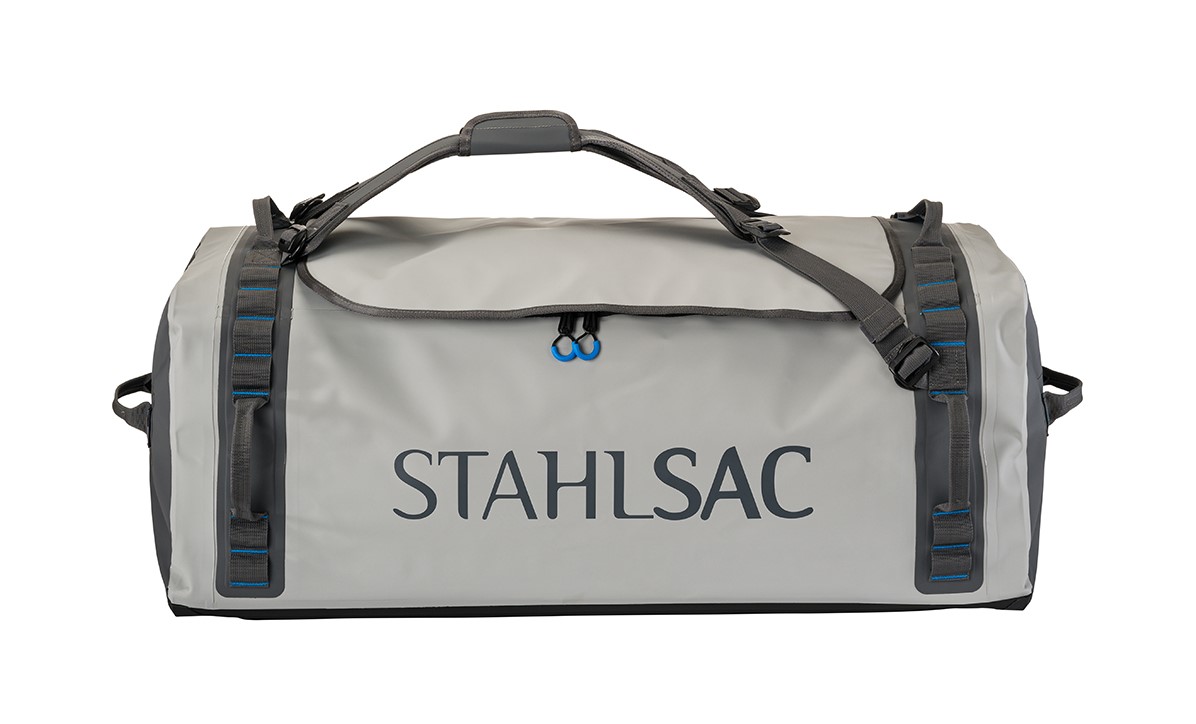
Stahlsac dive bags and travel luggage are built for our community of divers, surfers, kayakers and outdoor explorers who need bags that are constructed with durability, toughness, and 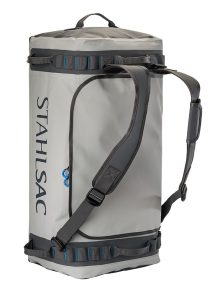 the highest quality the industry has ever seen. We were founded by one man determined to build better watersports and dive bags, and today, that mission is carried on by many. Adventure doesn’t just present itself; it requires discovery. When we design dive bags, we make sure they are tough enough for you to explore in all conditions—warm and cold, wet and dry—to the nearest and farthest reaches of the earth. And for those times you want to push the boundaries of adventure, Stahlsac dive bags make sure you can truly GO ANYWHERE.
the highest quality the industry has ever seen. We were founded by one man determined to build better watersports and dive bags, and today, that mission is carried on by many. Adventure doesn’t just present itself; it requires discovery. When we design dive bags, we make sure they are tough enough for you to explore in all conditions—warm and cold, wet and dry—to the nearest and farthest reaches of the earth. And for those times you want to push the boundaries of adventure, Stahlsac dive bags make sure you can truly GO ANYWHERE.
Abyss Duffels
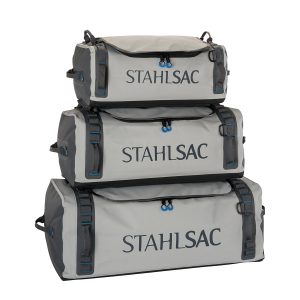 Made to be your partner-in-crime on every adventure, Stahlsac’s Abyss Duffels protects your gear from Mother Nature’s worst. Tough and 100% waterproof with double-TPU nylon material that shrugs off daily wear-and-tear, and RF-welded seams further boost the bag’s potential for lifelong exploring. Get Wet. Get Lost. Go Anywhere with Abyss.
Made to be your partner-in-crime on every adventure, Stahlsac’s Abyss Duffels protects your gear from Mother Nature’s worst. Tough and 100% waterproof with double-TPU nylon material that shrugs off daily wear-and-tear, and RF-welded seams further boost the bag’s potential for lifelong exploring. Get Wet. Get Lost. Go Anywhere with Abyss.
- A weatherproof duffel for trips, travel, and adventure
- Ultra-durable double-TPU nylon protects your gear
- Material repels water and keeps your equipment dry
- RF-welded seams are flush, tough, and waterproof
- Removable straps transform duffel into backpack
- Zippered internal stow compartments carry essentials
- External zippered flap is easy to open and close
- Welded external handles make transporting a breeze
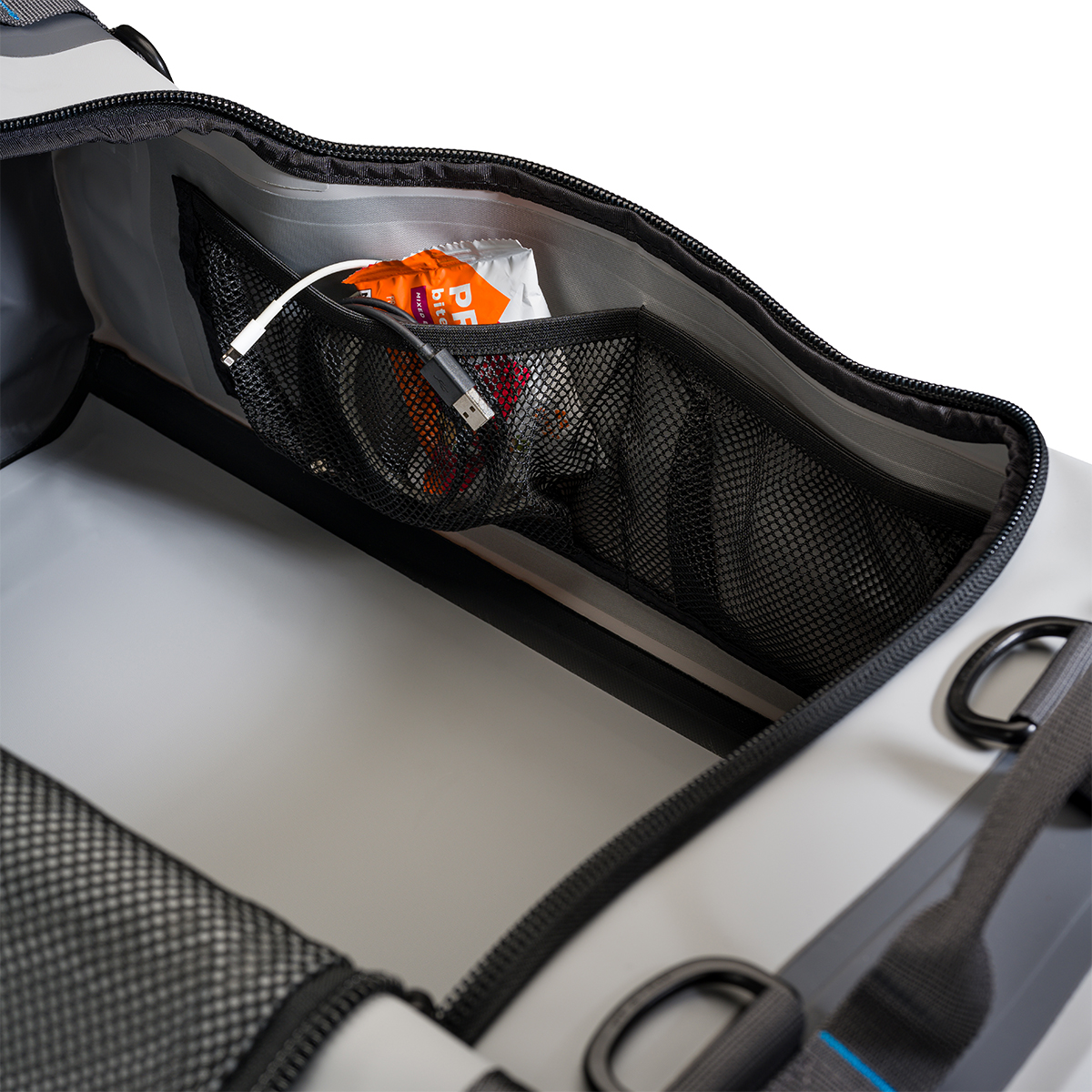
Panama Mesh Backpack
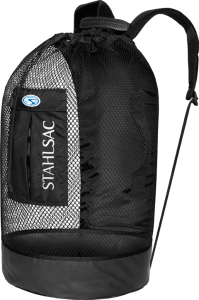 The most copied design in scuba diving, the Stahlsac Panama Mesh Backpack is the “original” design and features two high-density foam padded shoulder straps, extra durable polyester mesh, duffel bag handles and our unique zippered dry pocket inside that combines with a wet pocket outside. The bottom’s built from reinforced 18-gauge PVC nylon to combat the wear and tear of your active coastal lifestyle, and, as a bonus in every bag, we supply a 12″ x 12″ mesh drawstring satchel for extra stowing utility. Pack up your beach kit and go.
The most copied design in scuba diving, the Stahlsac Panama Mesh Backpack is the “original” design and features two high-density foam padded shoulder straps, extra durable polyester mesh, duffel bag handles and our unique zippered dry pocket inside that combines with a wet pocket outside. The bottom’s built from reinforced 18-gauge PVC nylon to combat the wear and tear of your active coastal lifestyle, and, as a bonus in every bag, we supply a 12″ x 12″ mesh drawstring satchel for extra stowing utility. Pack up your beach kit and go.
- Density foam padded shoulder straps
- Outside wet/dry pockets
- 2 Carry handles
- Tough, snag-resistant polyester mesh
- Reinforced PVC bottom
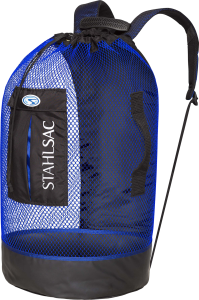
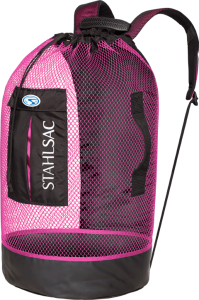
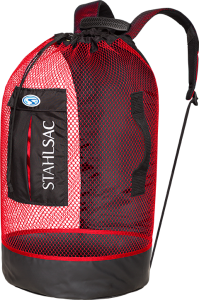
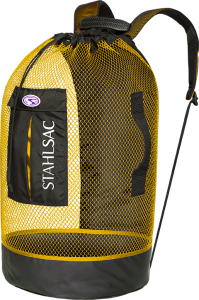
For more information about Stahlsac bags, visit www.stahlsac.com/dive-bags.
Sea & Sea is the home of Stahlsac and other leading diving brands in the UK.
Blogs
EXCLUSIVE: Jeff Goodman interviews Mark Spiers, CEO of New Scuba Diving Training Agency NovoScuba

In a video recorded exclusively for Scubaverse.com, Jeff Goodman interviews Mark Spiers, CEO of new scuba diving training agency NovoScuba.
Find out more about NovoScuba at www.novoscuba.com.
-

 News3 months ago
News3 months agoCapturing Critters in Lembeh Underwater Photography Workshop 2024: Event Roundup
-

 Marine Life & Conservation Blogs3 months ago
Marine Life & Conservation Blogs3 months agoCreature Feature: Swell Sharks
-

 Blogs2 months ago
Blogs2 months agoMurex Resorts: Passport to Paradise!
-

 Blogs2 months ago
Blogs2 months agoDiver Discovering Whale Skeletons Beneath Ice Judged World’s Best Underwater Photograph
-

 Gear Reviews3 weeks ago
Gear Reviews3 weeks agoGEAR REVIEW – Revolutionising Diving Comfort: The Sharkskin T2 Chillproof Suit
-

 Gear Reviews3 months ago
Gear Reviews3 months agoGear Review: Oceanic+ Dive Housing for iPhone
-

 News2 months ago
News2 months agoPADI Teams Up with Wellness Brand Neuro to Drive Ocean Change and Create a Blue State of Mind
-

 Marine Life & Conservation2 months ago
Marine Life & Conservation2 months agoSave the Manatee Club launches brand new webcams at Silver Springs State Park, Florida


